The Future of Digital Marketing

From banners to big data, digital marketing has continuously adapted to meet the needs of customers and brands alike. Today, with increased connectivity and established digital infrastructure, changes are happening much faster.1 The traditional digital marketing landscape of paid media, SEO, content marketing, social media, community management, and more, are experiencing dramatic developments and changes as innovations in technology develop.
Below we highlight innovations happening within traditional digital marketing channels, and explore why marketers need to evolve for a high-tech digital marketing evolution.

Paid search, or search engine marketing, is the marketing practice of generating web traffic by buying advertisements on search engines. Marketers either pay every time their advert is clicked on (referred to as pay per click or PPC) or when their advert is displayed.2 There is generally a dedicated team deciding what platforms to spend on, based on where they believe the advert will receive the most traction.
A probable distribution to this traditional method of paid media is programmatic advertising, a type of paid media that employs artificial intelligence to automatically buy advertising space, using data, to determine which audience the ads should target.3
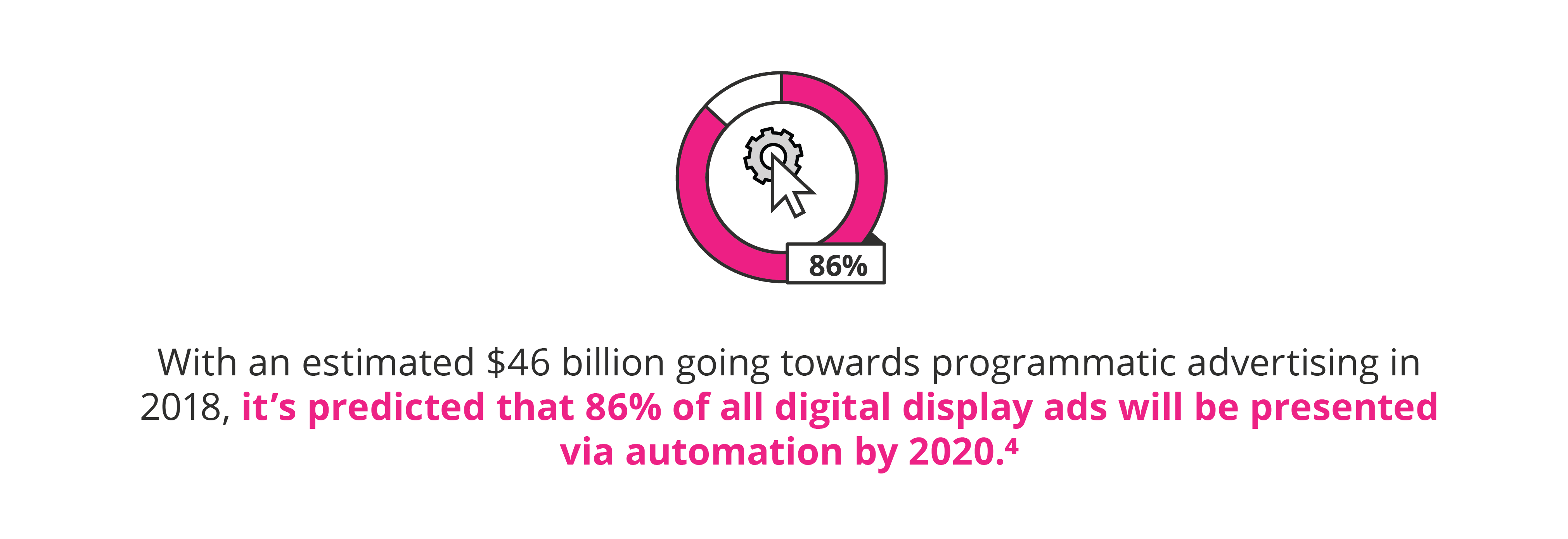
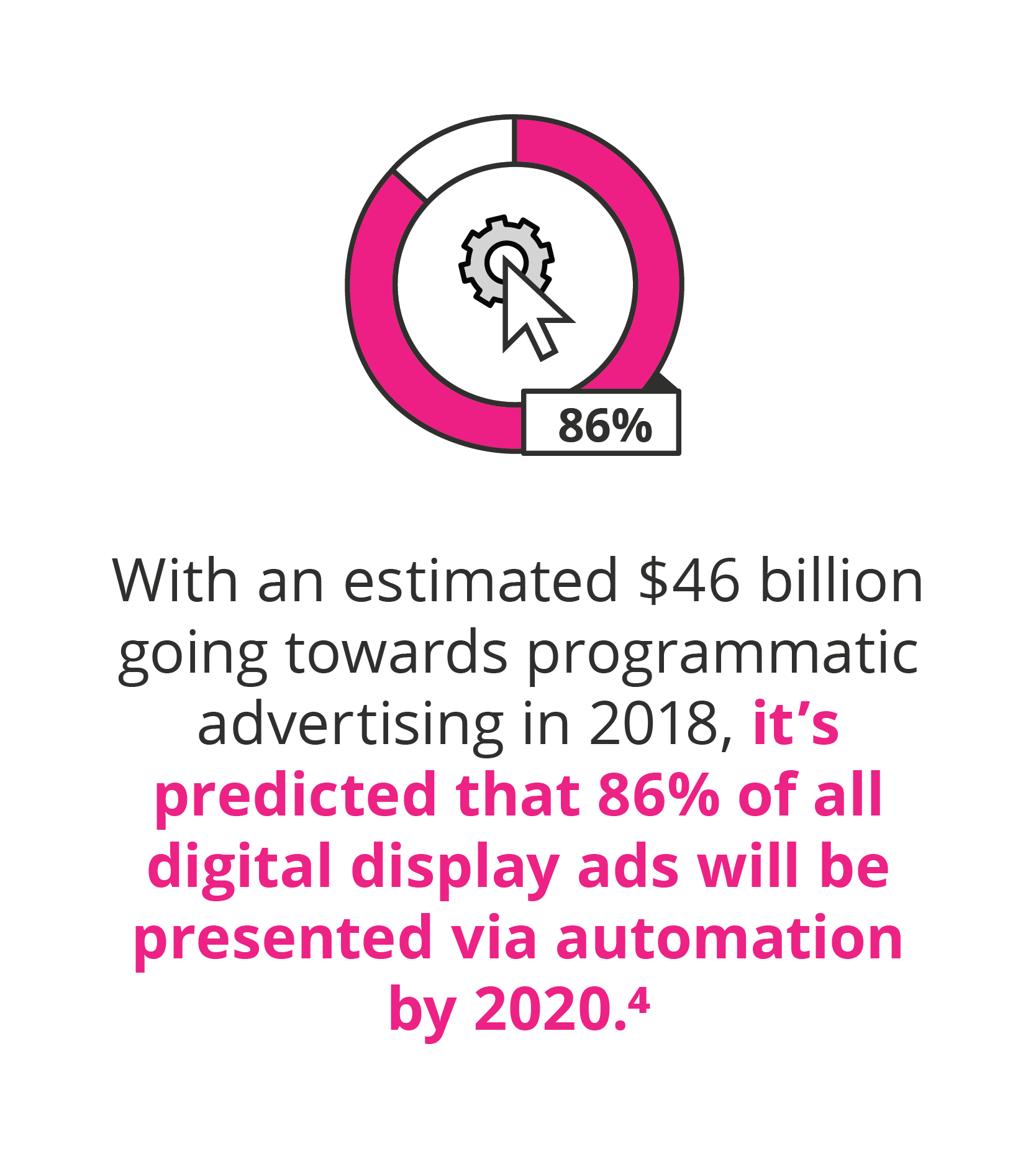
With an estimated $46 billion going towards programmatic advertising in 2018, it’s predicted that 86% of all digital display ads will be presented via automation by 2020.4 This shift towards AI automation provides a more seamless, efficient, and accurate approach to paid media, while simultaneously lowering customer acquisition costs.5

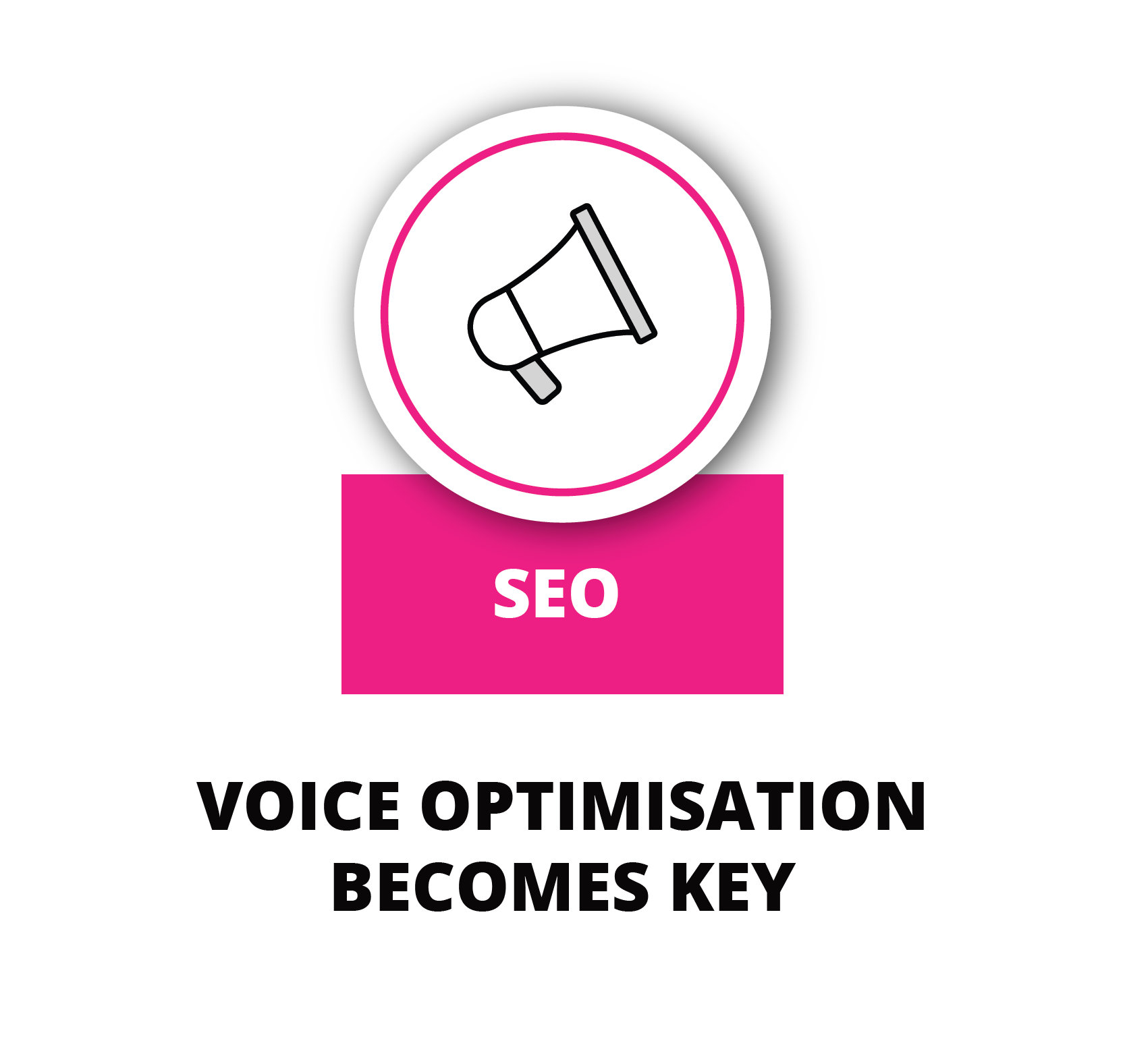
With the introduction of Siri, Alexa, Cortana, and Google assistant, the popularity of voice search, whereby the user speaks directly to their device instead of typing a request or manually performing a task, is on the rise. As consumers adapt and begin to use voice assistants more and more, marketers working with SEO should consider optimising their websites to recognise voice search.6
72% of people who own a voice-activated speaker say that their devices are often used as part of their daily routine.
The way we speak is fundamentally different to the way we type, and the ease of simply asking a question explains why “72% of people who own a voice-activated speaker say that their devices are often used as part of their daily routine.”7 As the popularity of the technology rises, it is likely this number will increase, and the idea of a permanent, hands-free assistant will begin to feel like second nature.
In 2017, Google announced a 95% accuracy rate on its voice recognition digital assistant, and as this technology improves, so it’s usership will grow.8 It’s growth rate is expected to be fast, with 50% of all searches expected to be voice by 2020.9 To make the most of voice search, long-tail keywords and natural content reflecting conversational language is likely to rank higher.10
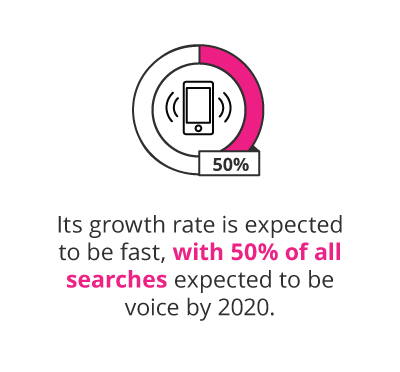
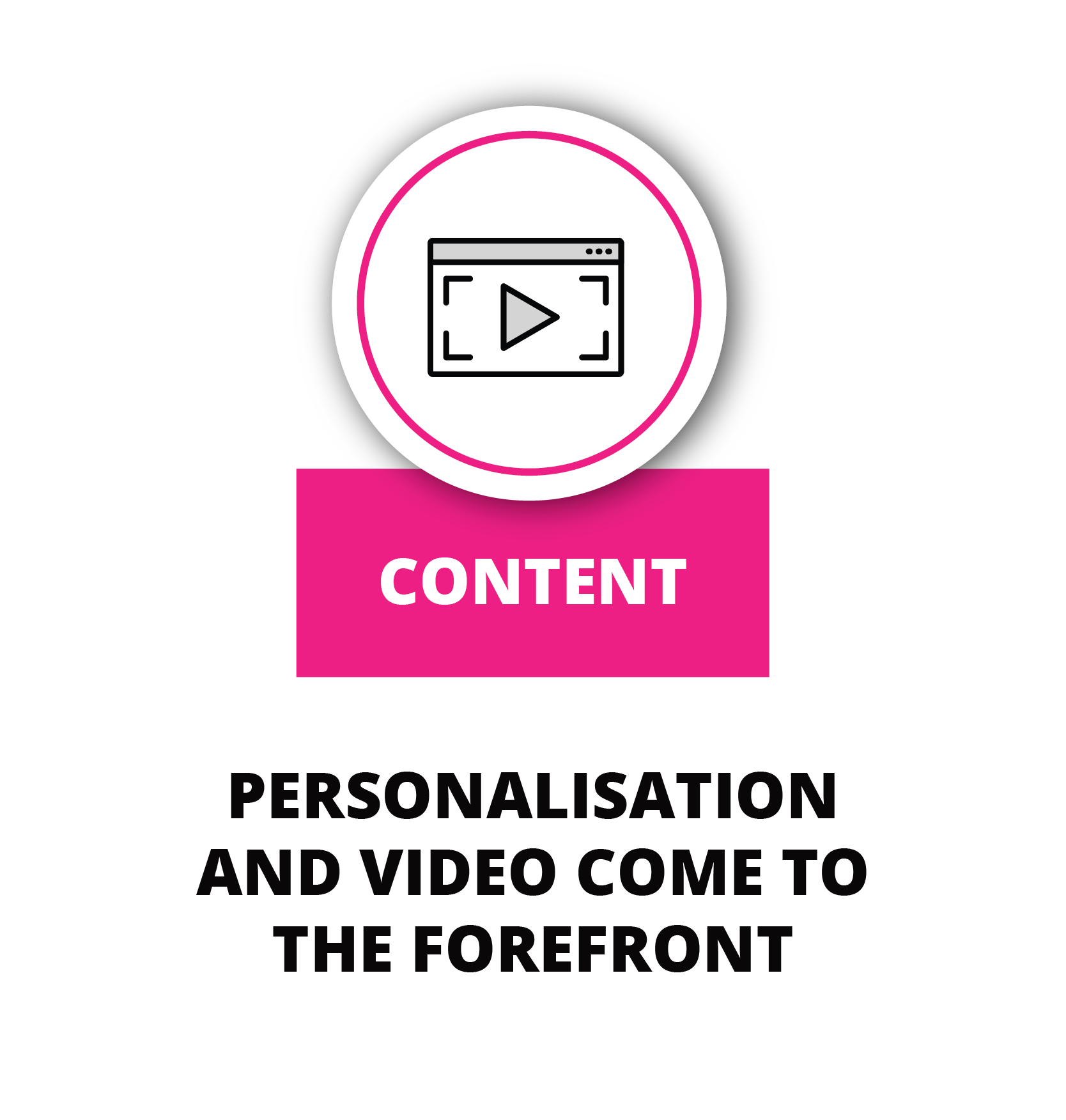
Following from SEO and voice search optimisation, conversational content that feels personal and authentic remains key to engaging customers. However, in 2019, personalisation is at the forefront of successful content marketing.11
With the evolution of big data and the availability of in-depth consumer information, personalising content is not only accessible, but 96% of marketers believe personalisation improves customer relationships.12 As customers are drawn to experiences that reflect their preferences,13 determining what content will be most relevant to an individual is key to customers’ satisfaction and loyalty.
While personalisation across all forms of content is important, the type of content you’re generating remains a crucial aspect of your digital marketing strategy.
Video content is gaining traction as an increasingly popular form of content. With live video, stories, and Instagram TV, more and more businesses are using video as a digital marketing tool. Some marketers are going above and beyond and creating personalised video messaging as opposed to email or phone calls,14 which may prove to be a promising new way to engage customers.
The recent development of 360-degree video content allows viewers to control their perspective for a more personalised and engaging experience. Along with this technology, virtual reality is immersing viewers in the brand experience completely, and with the virtual reality market expected to reach $22.4 billion by 2020, it’s wise for brands to familiarise themselves with the potential of this technology.15
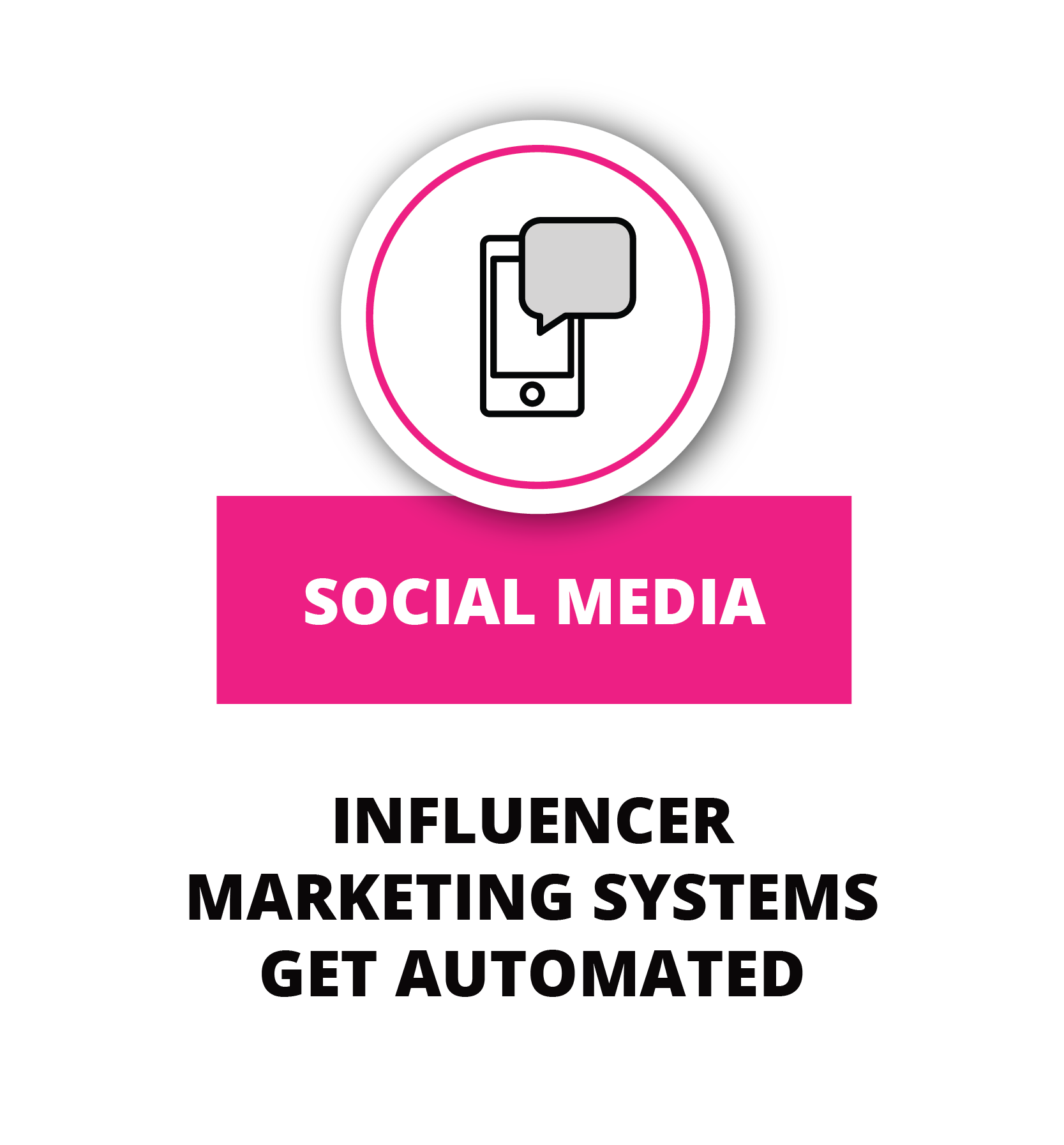
Influencer marketing has become the equivalent of word-of-mouth marketing today. As people generally trust people more than brands, hearing positive information or feedback about a product or experience from an influencer often holds more weight and credibility than when it comes from the brand itself.
However, this industry saw some challenges in previous years as brands struggled to find the right people to promote their image and message. Today, AI is working to solve these problems by making influencer marketing a largely automated process. AI is able to perform an influencer-brand affinity analysis by sifting through millions of images in seconds to select particular influencers based on specified characteristics. Once an influencer has posted or shared content, AI is able to analyse the data of the post to determine how well the post was received, and how well the influencer and brand match.16
In terms of the influencer-brand relationship, AI can be trained using existing data to predict what incentive works most effectively to encourage an influencer to post, and then proceed to offer this incentive at the right moment.17 These advances allow the influencer marketing process to become less resource intensive, faster, and more data driven for a better customer experience and business relationship.
In the digital marketing landscape, 2019 is about putting the customer at the forefront of the digital marketing strategy in a more detailed way than was previously possible. Thoughtful, personalised marketing powered by big data, AI, and innovative tech will define the way brands communicate with customers. Appealing to an individual with conversational, speech accessible, and visually engaging content are key trends informing the way brands are going to position themselves in the near future. In an industry often saturated with sensationalist talk around technology, this should provide marketers and brands with an idea of practical and actionable improvements that technology can provide to their existing digital strategies.
Ensure that your brand remains visible and competitive in the modern market with the UCT Digital Marketing online short course.
- 1 Desjardins, J. (Feb, 2018). ‘The rising speed of technological adoption’. Retrieved from Visual Capitalist.
- 2 Sentance, R. (Nov, 2018). ‘What is paid search (PPC) and why do we need it?’. Retrieved from Econsultancy.
- 3 Dave, N. (2018). ‘11 digital marketing trends you can no longer ignore in 2019’. Retrieved from Single Grain.
- 4 Fisher, L. (Apr, 2018). ‘US programmatic ad spending forecast 2018’. Retrieved from Emarketer.
- 5 Dave, N. (2018). ‘11 digital marketing trends you can no longer ignore in 2019’. Retrieved from Single Grain.
- 6 Mikulski, T. (Sep, 2018). ‘The impact of voice search optimization on SEO’. Retrieved from Clutch.
- 7 Kleinberg, S. (Jan, 2018). ‘5 ways voice assistance is shaping consumer behaviour’. Retrieved from Think with Google.
- 8 Mikulski, T. (Sep, 2018). ‘The impact of voice search optimization on SEO’. Retrieved from Clutch.
- 9 Olsen, C. (Apr, 2016). ‘Just say it: the future of search is voice and personal digital assistants.’ Retrieved from Campaign.
- 10 Mikulski, T. (Sep, 2018). ‘The impact of voice search optimization on SEO’. Retrieved from Clutch.
- 11 Dave, N. (2018). ‘11 digital marketing trends you can no longer ignore in 2019’. Retrieved from Single Grain.
- 12 Sweet, K. (Apr, 2017). ‘96% of marketers agree that personalisation advances customer relationships’. Retrieved from Evergage.
- 13 Ghattas, S. (Mar, 2018). ‘What is the future of digital marketing?’ Retrieved from Forbes.
- 14 Dave, N. (2018). ‘11 digital marketing trends you can no longer ignore in 2019’. Retrieved from Single Grain.
- 15 Rinaldi, J. (Jan, 2019). ‘Where is video marketing going in 2019 and beyond?’ Retrieved from Impact.
- 16 Ravindra, S. (2018). ‘How artificial intelligence is transforming influencer marketing’. Retrieved from Single Grain.
- 17 Ravindra, S. (2018). ‘How artificial intelligence is transforming influencer marketing’. Retrieved from Single Grain.
